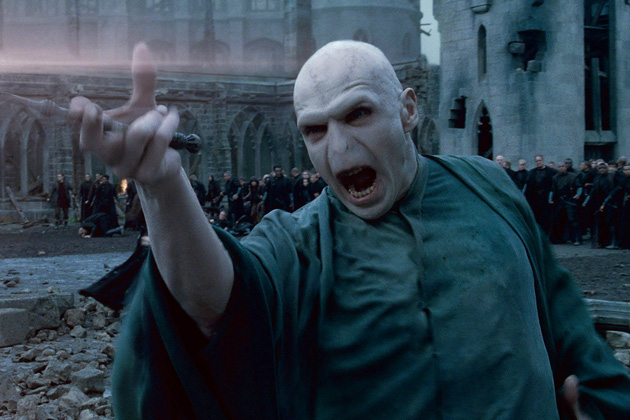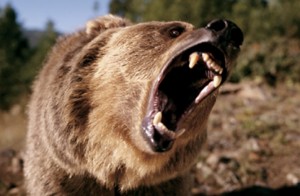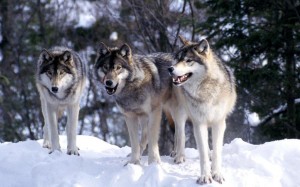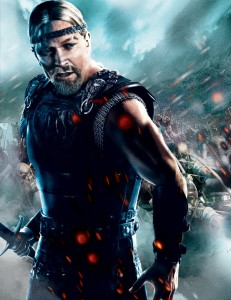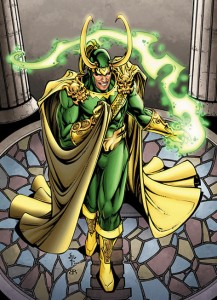The first thing that you may be asking yourself is “what in the world is taboo deformation”? Taboo deformation happens when a word or concept is deemed inappropriate to talk about, whether in public or in private. Most curses work this way. Instead of saying “god damn” some people would replace it with “gosh darn”. Another good modern day example of taboo deformation would be how Voldemort is discussed in the Harry Potter novels and movies. The characters in the series are afraid that if they say Voldemort’s name, he will come and find them. So instead they replace it with ‘he-who-must-not-be-named’ or even ‘the Dark Lord’ in some cases. ‘He-who-must-not-be-named’ is used out of fear by the characters who do not want to summon, while ‘the Dark Lord’ is used by those who want to show respect to him. Names are powerful things and those that use ‘the Dark Lord’ may not feel worthy enough to use his name.
Something similar happened in Indo-European culture with bears (*h2ŕ̥tḱōs) and wolves (*u̯ĺ̥kwōs). There was a belief that if one were to say the names of the animals, they would come to them (very similar to the belief of the Harry Potter characters that refuse to use Voldemort’s name). This is not exactly something that they would want to happen. The word ‘bear’ in English simply means ‘the brown one’. Other languages, such as those in the Slavic branch, refer to bears as ‘honey-eaters’ (Russian/Slovak medved). In Russian culture it is common to refer to bears as ‘grandfather’. Hunters in Siberia would use ‘grandfather’ because they believed that by making the bear a member of their family, that it would be less likely that it would come to cause them harm.
Wolves, too, carried negative connotations; for instance, Old English wulf was sometimes used were in reference to the devil.
But the fear of bears and wolves perhaps manifests itself the most in Scandinavian/Germanic culture. There are many ways that the Scandinavian people tried to deal with that fear, including naming themselves after bears and wolves, and taking on the characteristics of the animals in warfare. The Vikings would name themselves after bears to take on their power and to tell other warriors that they were just as strong, if not stronger than the bear. To this day the names Björn (Swedish) and Bjørn (Danish/Norwegian) are still very popular male names. The surnames Lowell, Lovel, and Lovett are diminutives of wolf, and are common Old French and Anglo-Norman names. Names of the greatest heroes from the Norse Sagas are also named after bears or wolves.
Beowulf, literally “bee-wolf” would be the most famous example, with the name Beowulf being a kenning for ‘bear’. A kenning is typically a compound of two or more words that refer to something without using the word for that specific thing. Other examples of kennings would be “whale-road” for the sea, and “otter’s ransom” for gold. Kennings were very prolific in Old Norse poetry and someone who could make up kennings was considered to be very skilled. Wulf was a very popular compound for Anglo-Saxons. For example, names like Cynewulf (name of a famous Anglo-Saxon poet), Ealdwulf (a name of a king of East Anglia), and Æthelwulf (a king of Wessex) are common.
Another famous hero named for the bear is Bodvar Bjarki (literally “little bear”) from Hrolf’s saga Kraka. Bjarki’s father even had the ability to transform into a bear. So not only was Bjarki named after the bear to strike fear into his enemies hearts, but someone in his family was able to fully take on the form of the bear. One of the reasons why there are characters in the Old Norse sagas and Mythologies can turn into bears is so that they can become stronger than it, and overcome it.
This was also the idea behind the Viking berserkers. Berserker literally translates to “bear shirt” (ber-serkr), and these warriors would don the skin of a bear before they went into battle. There was a belief among the Scandinavians that if you put on the skin of an animal, you become that animal. When the berserkers would don the skin of the bear they genuinely believed that they have become the bear, not just taken on the characteristics of it. It was because of this that the berserkers were the most fearsome warriors that the Vikings could produce. It is also why they are called “Bear Warriors”.
So, we’ve talked a lot about bears, but not that much about wolves. The wolves were seen as a sort of ambiguous creature. In Norse mythology wolves were said to be the sons of Loki, the trickster god.
Loki himself was a very ambiguous character because it is unclear if he is a god or a frost giant, or where his loyalties lie. For the most part wolves in the Old Norse stories were not good creatures, but not as dangerous as bears. In Iceland thieves were often times called wolves (…). We have a similar concept in English with calling someone we see as below us a dog. Unlike the bear, calling someone a wolf is not a good thing. A good majority of the wolves in Norse mythology are evil creatures. In the Norse myths the reason why the Sun and the Moon travel around in circles is because two giant wolves (Sköll, and Hati Hróðvitnisson) are chasing them. At Ragnarök, the Norse version of the apocalypse, the giant wolf Fenrir (a son of Loki) is supposed to kill Odin, king of the Æsir gods. Another wolf, Sköll (a son of Fenrir) will swallow the sun and the moon.
Bears, according to the Scandinavians, were noble but fearsome creatures. They were beings that were meant to be honored, but still feared. Wolves, on the other hand, were a little more ambiguous. They were not as dangerous bears, but they still garnered fear.
Written by Leah Hatch
For Further Reading
- Andrén, Anders, Kristina Jennbert, and Catharina Raudvere. 2006. Old Norse Religion in Long-term Perspectives: Origins, Changes, and Interaction. Nordic Academic.
- Berserkers. < http://www.viking.ucla.edu/hrolf/berserkers.html>
- Berserkergang. < http://www.vikinganswerlady.com/berserke.shtml>
- Guðmundsdóttir, Aðalheiður. 2007. “The Werewolf in Medieval Icelandic Literature.” The Journal of English and Germanic Philology. 106.3: 277-303.
- Hauksson, Thorleifur. 1996. “Man as Wolf (Once Again)”, Danish Yearbook of Philosophy 31: 107-10.
- Lindow, John. 1957. “Riddles, Kennings, and the Complexity of Skaldic Poetry,” Scandinavian Studies 47(3): 311-27.
- Ragnarok: The End of the World. < http://www.viking-mythology.com/ragnarok.php>
- Wolf and Werewolf. < http://www.etymonline.com/wolf.php>
